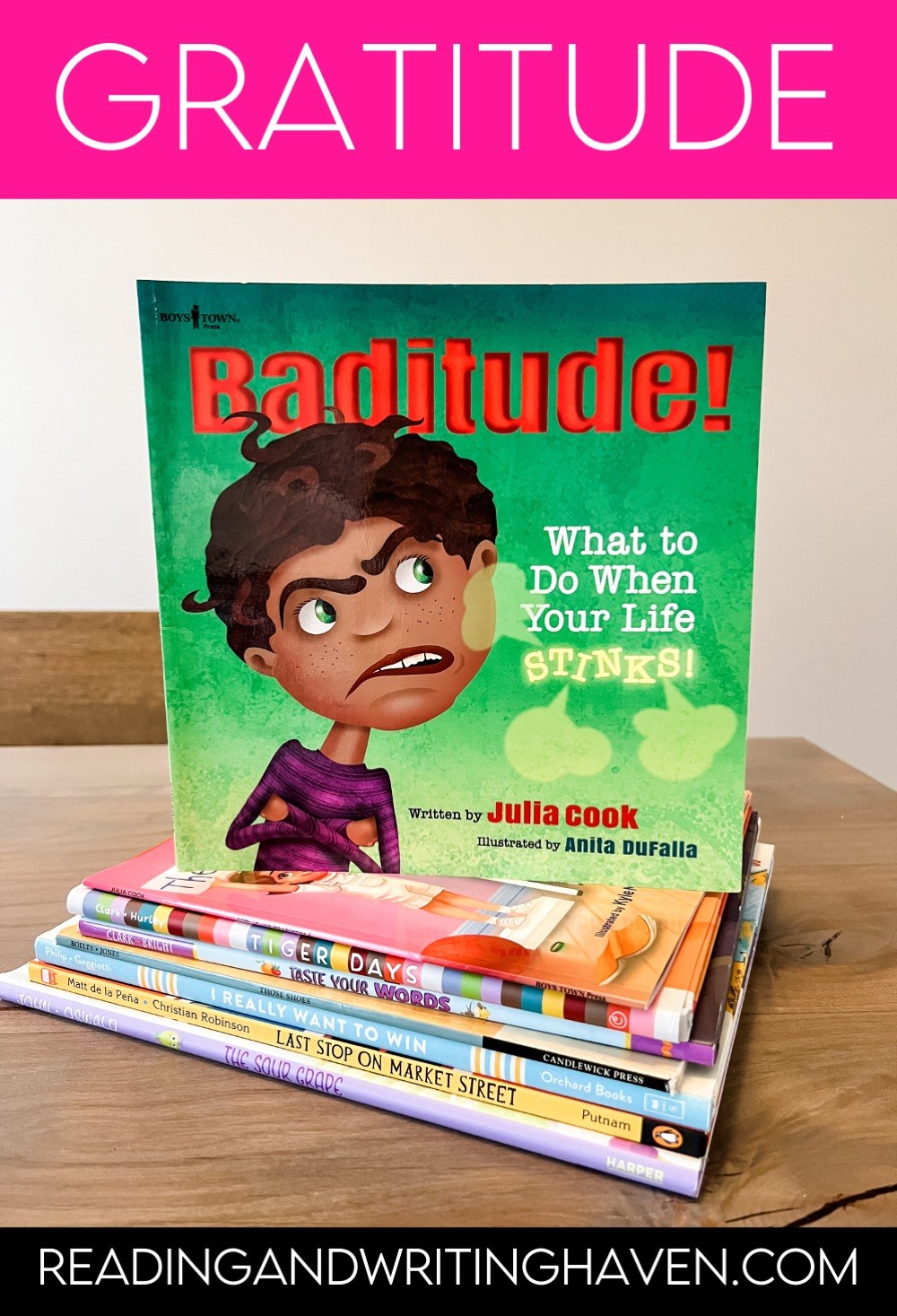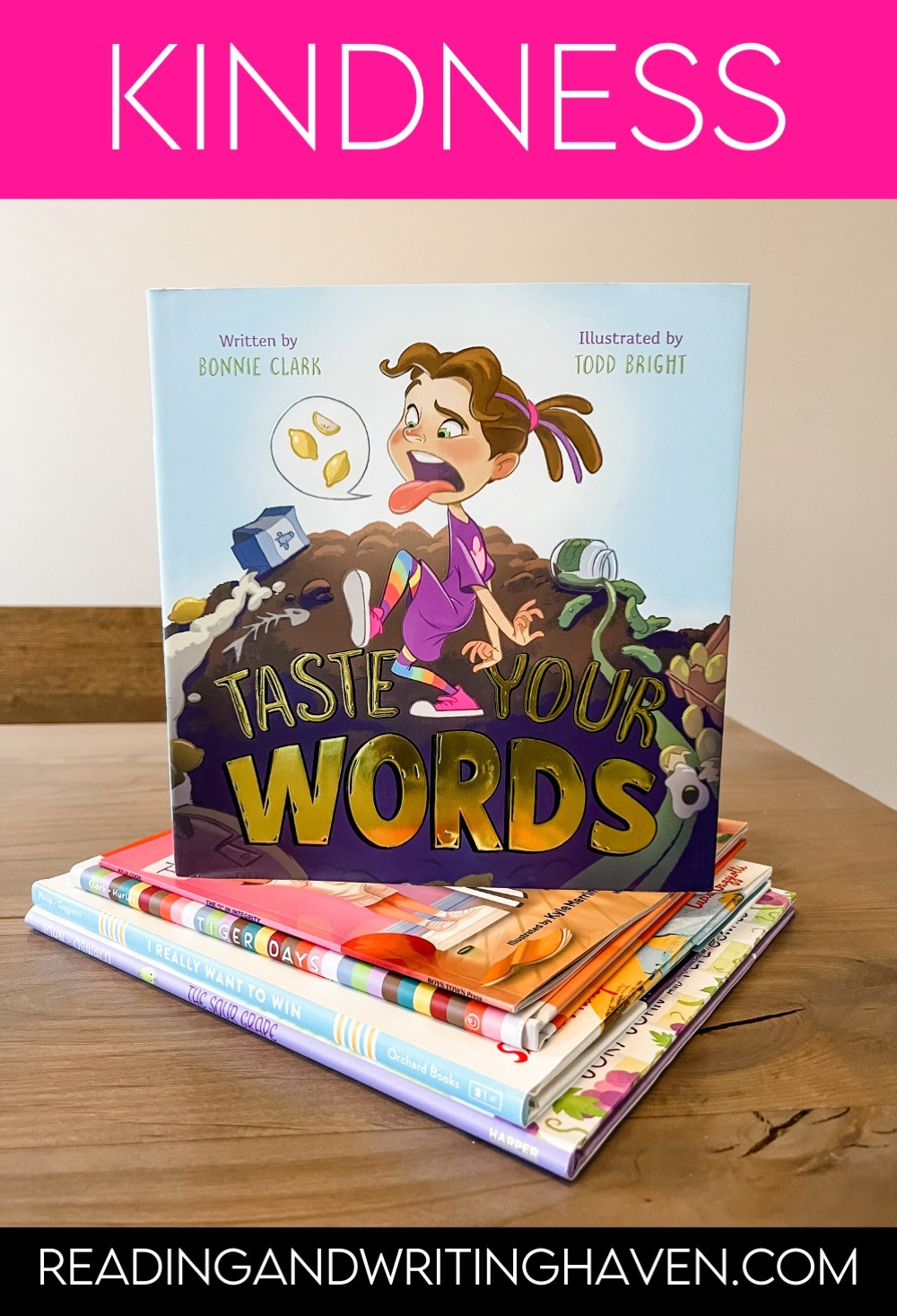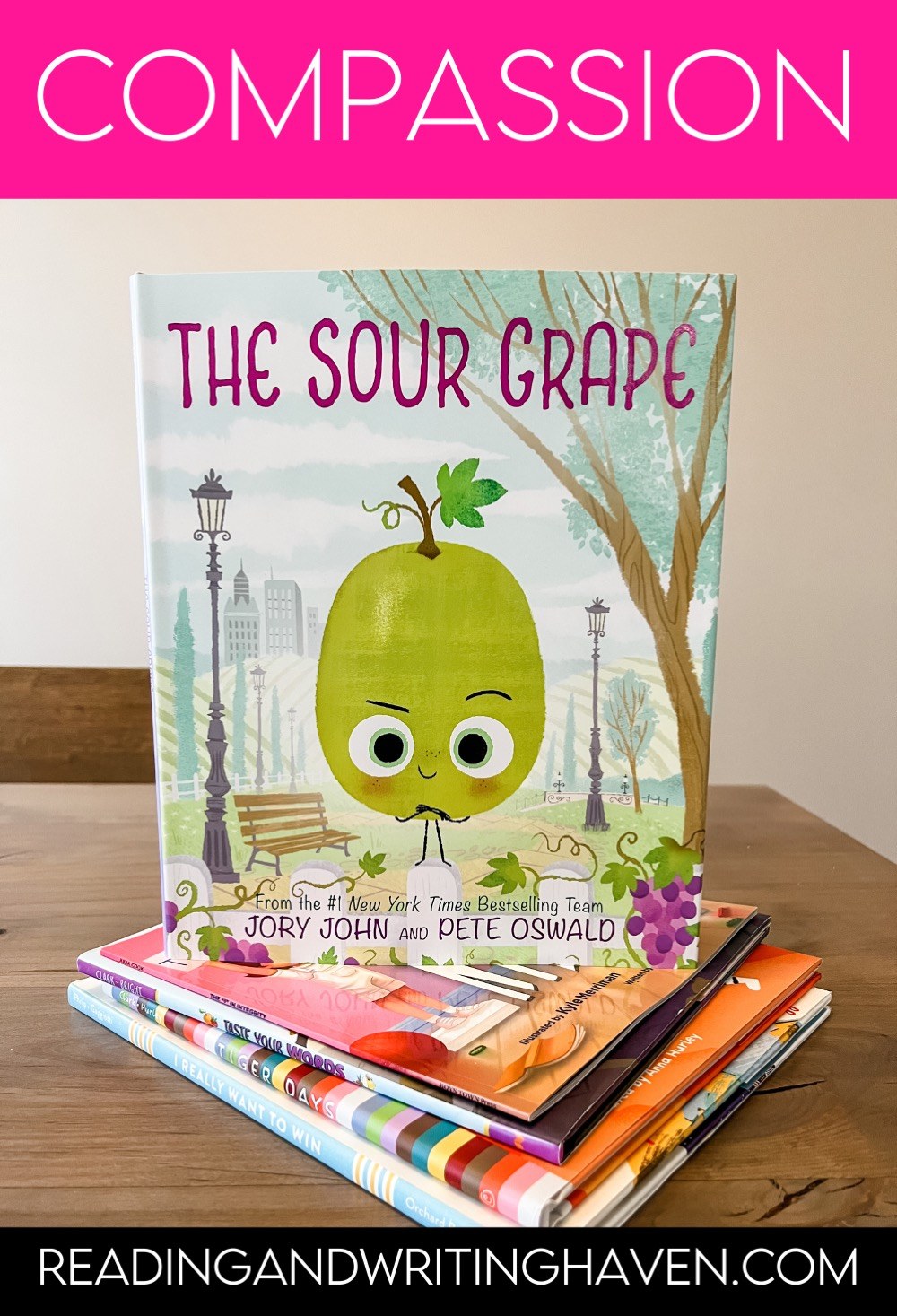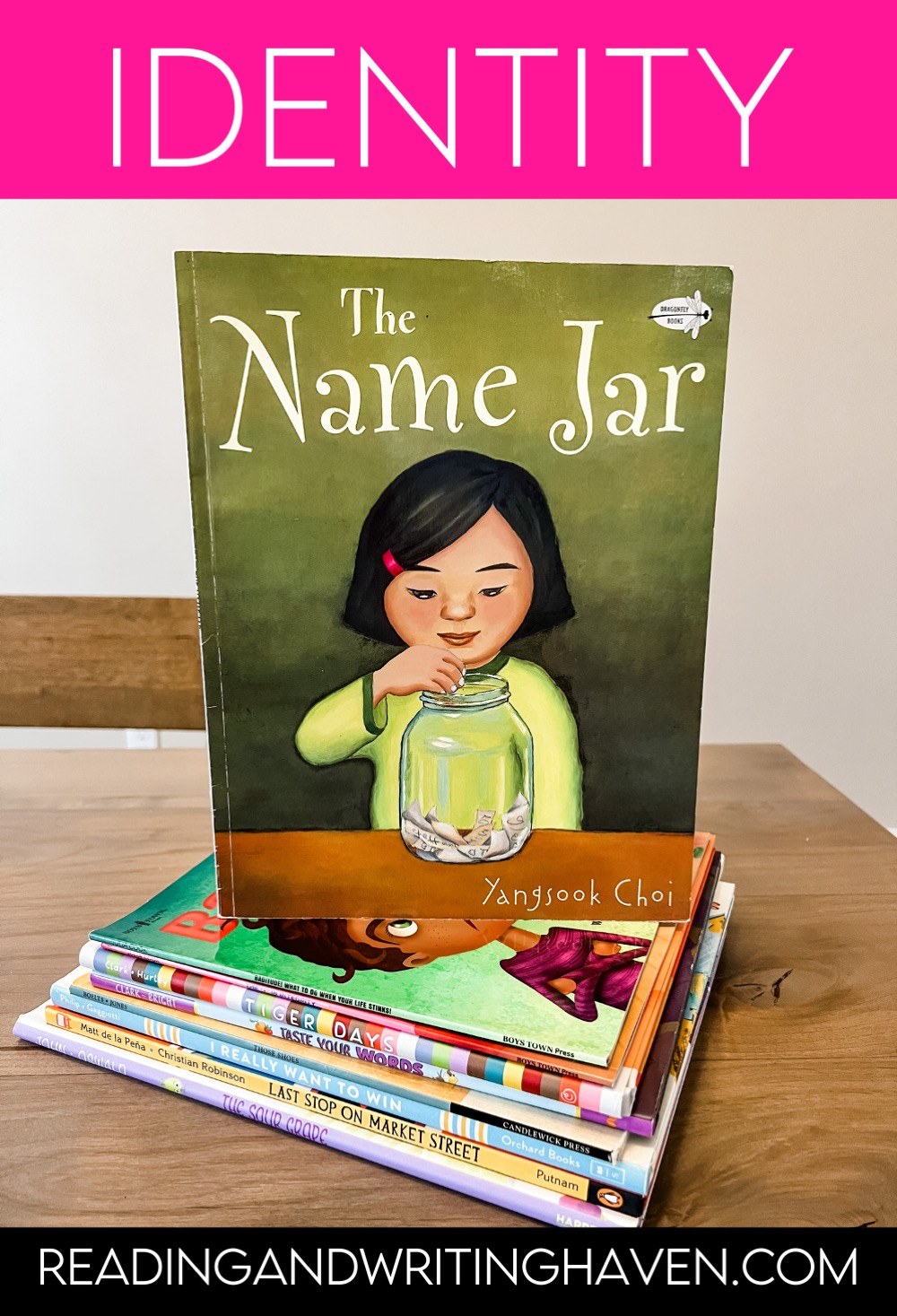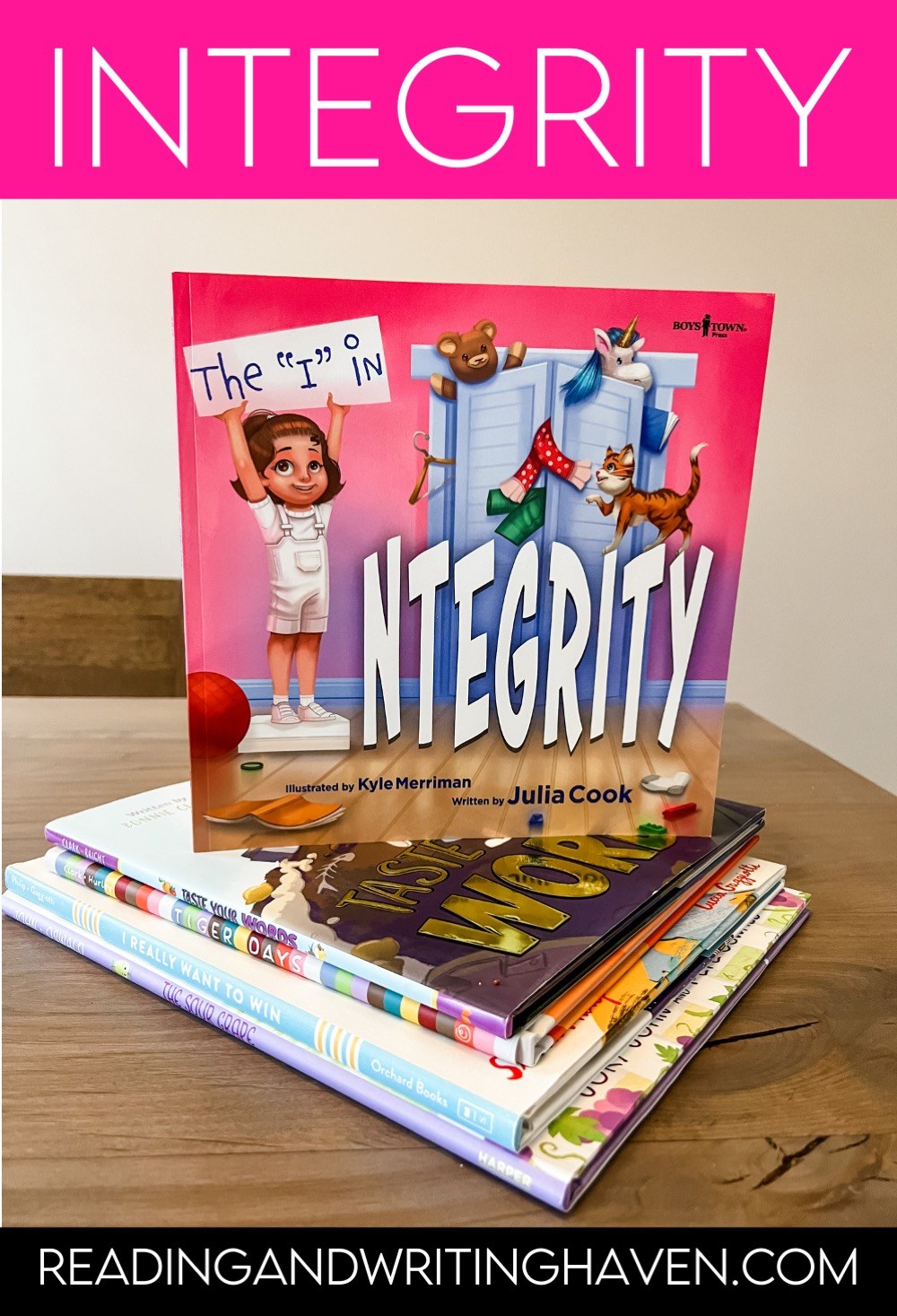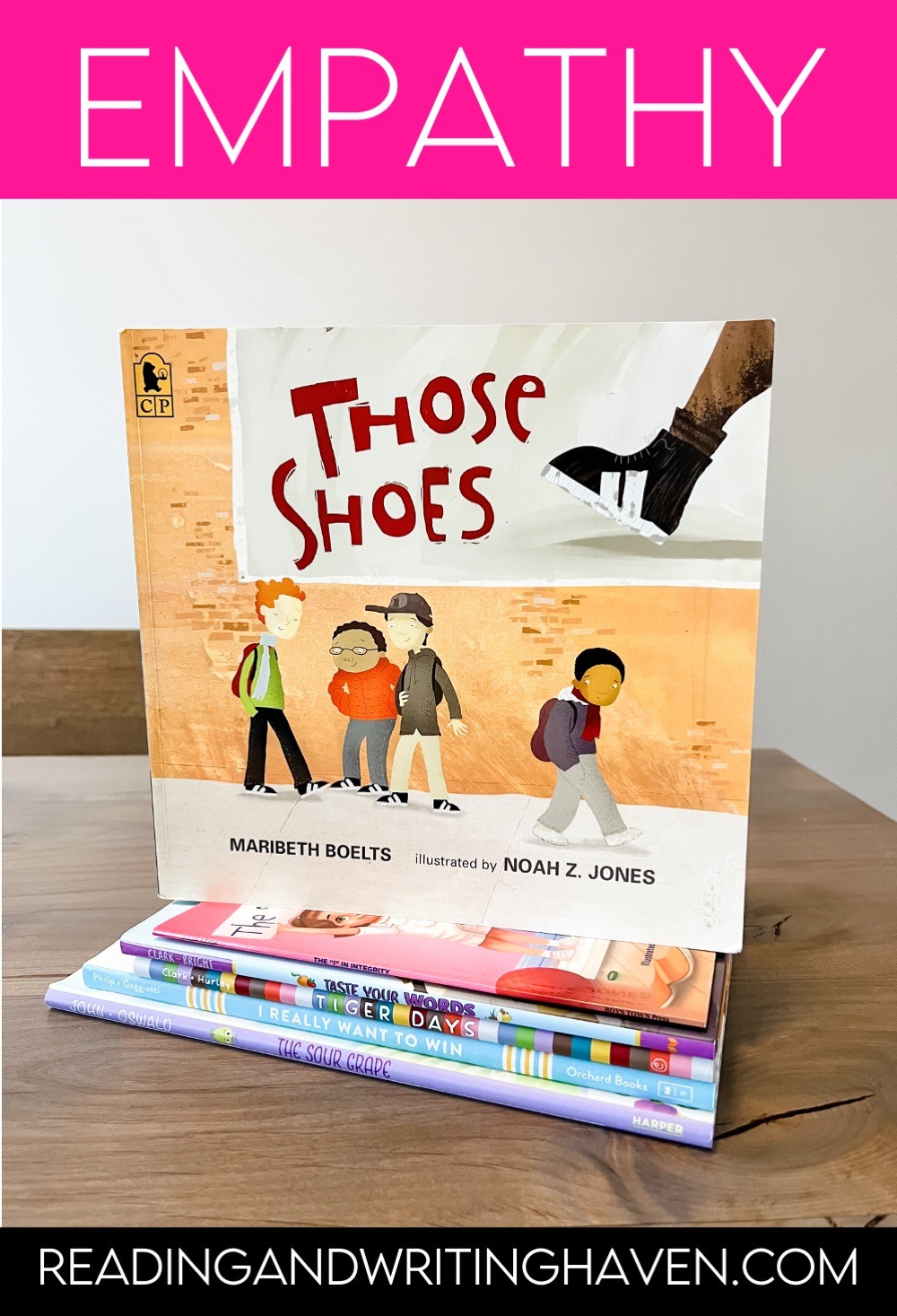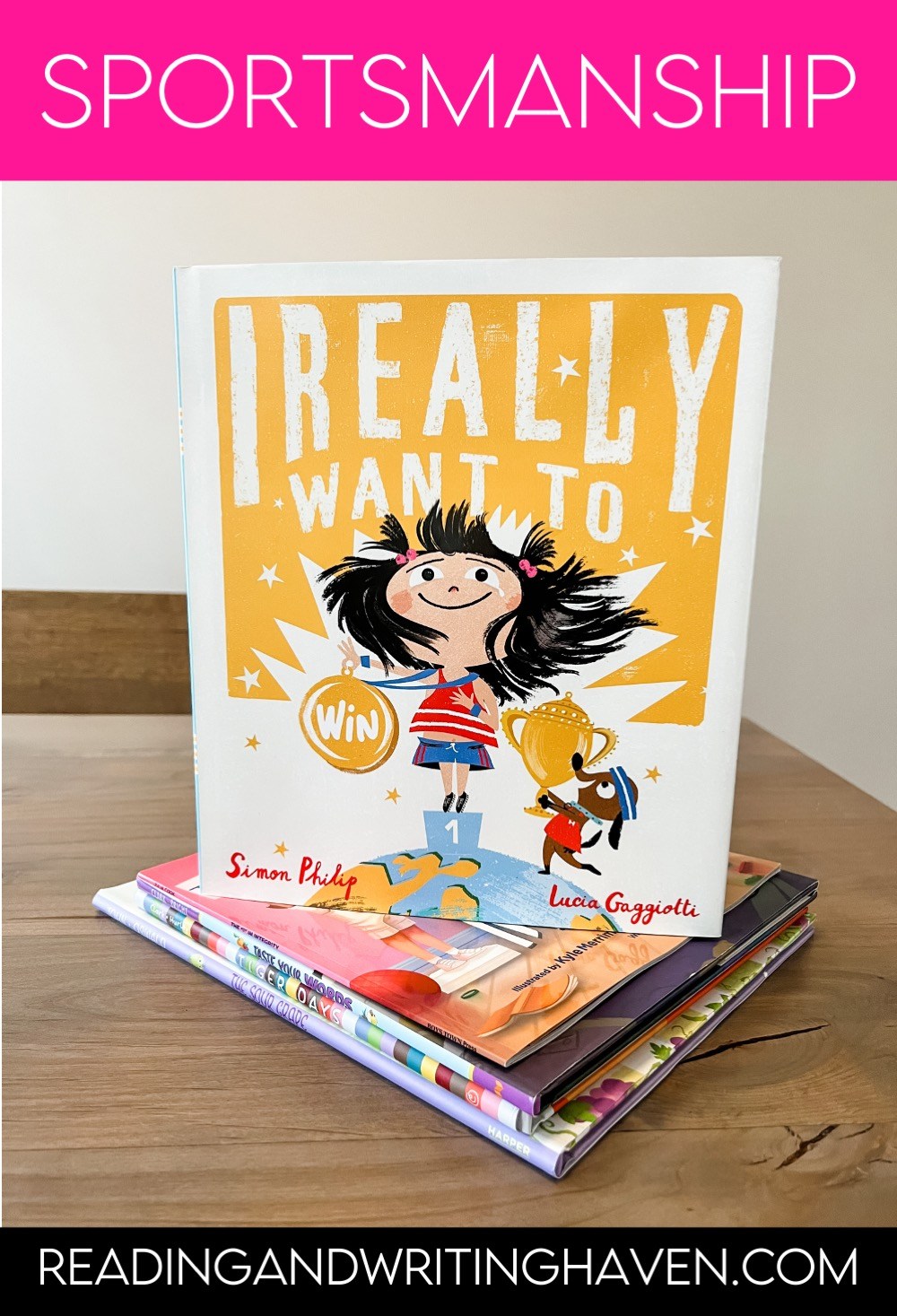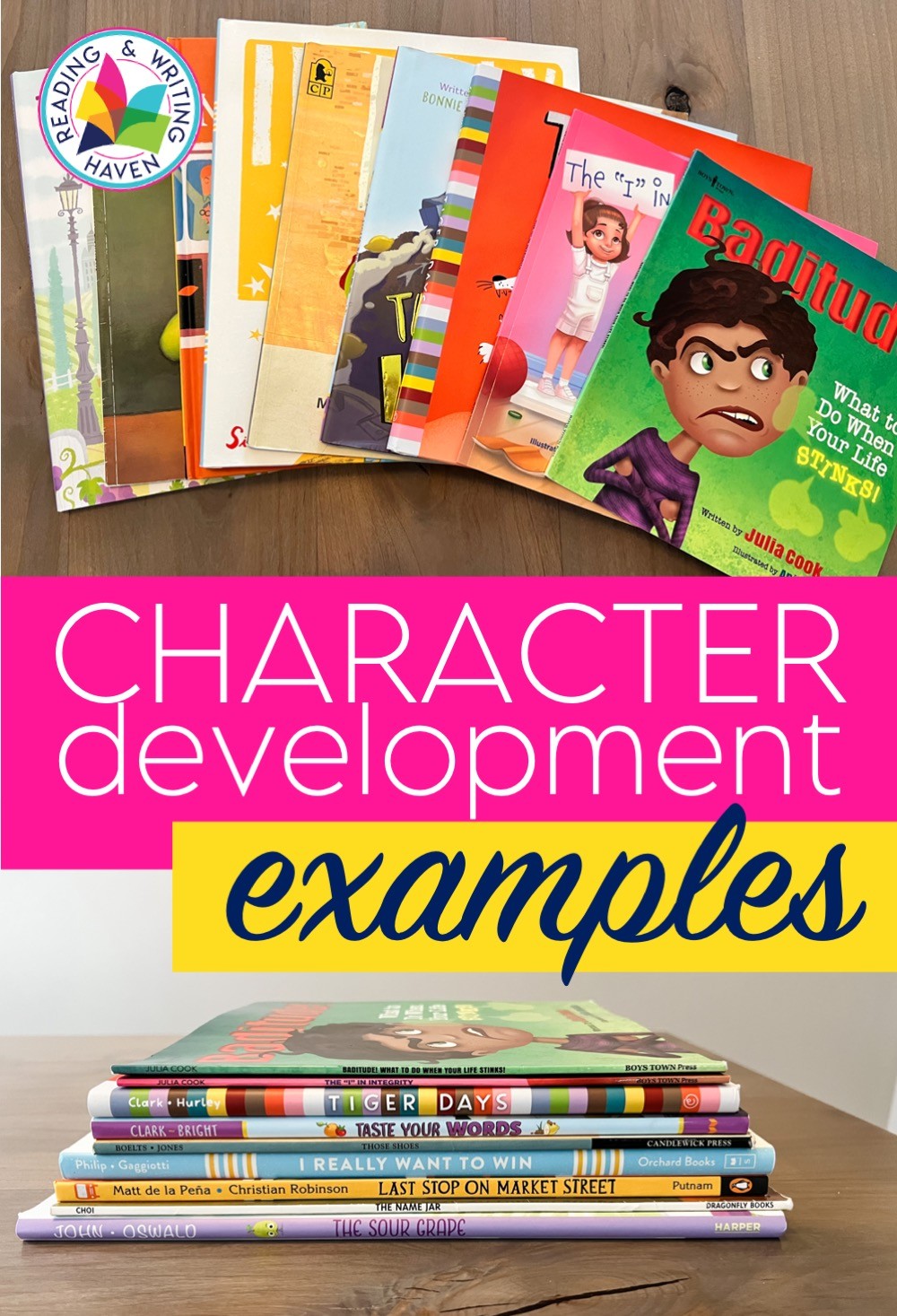7 Good Examples of Emotional Character Development – with Mentor Texts!
Looking to teach students about how character development impacts theme? First, you’ll need to model with some specific, high-interest examples. Students need to know what character development looks like from an author’s craft standpoint as well as what it feels like from a reader’s perspective. One of my favorite places to begin when it comes to character development is with picture books!
There are different types of characters in a story. I like to introduce or review these with students using an anchor chart. Students fill out a graphic organizer or add notes to their reader’s notebook as we discuss the types.
- Flat characters are those that readers have little information about.
- Round characters are ones the author develops more completely. We often feel we know them like a friend. These characters tend to have major roles in the text.
- Static characters stay the same. These are often minor character or antagonists.
- Dynamic characters change internally from beginning to the end. This change is typically instigated by dialogue, plot, and setting. Dynamic characters are complex and contribute to the overall theme development, learning an important lesson as they go.
- Antagonists are the force that opposes the protagonist. Students do not always understand that an antagonist is not always a person. Sometimes it’s a concept, like greed or a social issue, like poverty.
- Protagonists are the main character(s) in a text. They drive the storyline and play the leading role. Students often think protagonists are “good” and antagonists are the “bad guys,” but that isn’t always the case.
In their notes, students record information about each type of character as well as an example or two that we discuss.
CHARACTER DEVELOPMENT EXAMPLES
Once we have common understandings of types of characters, we explore picture book examples. I love sharing picture books with students! As a read aloud, you can pause and ask thought provoking questions at key points in the story. Why did the character say or do that? What do you think the character is thinking right now? How might that action or that dialogue impact the character internally?
Of course, picture books can also be used in learning stations or with small groups of students.
It can be time-consuming to find good examples of emotional character development in picture books. So, I did some of the grunt work for you! Here is a list of picture books with solid examples of emotional character development.
Baditude by Julia Cook
Meet Noodle. Sometimes, his life just stinks. Like today. Everything is extra stinky. Homework stinks. Yard work stinks. Family pictures stink. Practice stinks. Imagine an updated version of Alexander and the Terrible, Horrible, No Good, Very Bad Day.
In Baditude, Noodle learns that his bad attitude impacts his mood as well as the people around him negatively. Even his friends begin to avoid him! Luckily, Noodle is surrounded by some influential characters who help him identify the detrimental effects of his bad attitude. By the end of the book, Noodle learns language strategies like turning “I have to” into “I get to” and how the power of a positive perspective will help him turn his “baditude” into gratitude.
Using this book, students will see how wise words and patient encouragement from Noodle’s teacher and parent lead him to greater perspective and more gratitude as his emotional maturity develops.
Taste Your Words by Bonnie Clark
In Taste Your Words, Bonnie Clark makes the concept of kindness tangible with the repeated phrase, “taste your words.” The main character, Amera, runs into issues with her best friend, and they call each other names. Visibly upset, Amera spills the beans to her mother who advises, “That must have tasted yucky. Make sure to taste your words before you let them out of your mouth.”
As the book progresses, Amera has more opportunities to reflect on her mom’s advice. When her little brother takes her coloring supplies, she snaps at him. Feeling guilty, she tastes lemons and dirt. Later, she tells her mother she doesn’t want to apologize to her brother or help with dinner, which tastes like spoiled milk.
With perseverance and consistent reprimands from her mother, Amera finally has tasted enough bad words to realize she doesn’t like the way they make her feel. In the end, Amera utters the yummiest words she had tasted all day: “I love you.” And that? It tastes like chocolate.
Through this book, readers will see that characters can grow in kindness from the beginning of the story to the end once they realize the impact their hurtful words have on others. And that is a lesson we all need to learn!
The Sour Grape by Jory John and Pete Oswald
In The Sour Grape, readers follow a nameless green grape who likes to hold grudges against everyone he knows. Sour grape is beyond offendable, living life with furrowed brows and a chip on his shoulder. Of course, Sour grape wasn’t always bitter. As a young grape on a vine, he was very sweet and lovable. His days were full of humor, goodwill, and warmth.
One day, Sour grape invites everyone to his birthday party, but unfortunately, no one shows up. This tragic day sends Sour grape on a downward spiral toward a short, snappy lifestyle. As he says himself, “After that, my personality became something else entirely….Finally, I became a sour grape.”
Eventually, Sour grape’s friend Lenny gives him a dose of his own grouchy medicine, leaving him to sit in nature, pondering the beauty that surrounds him. As he reflects on his own feelings spurred on by Lenny’s tartness, he reconsiders his own demeanor and how his lack of compassion impacts others. Slowly, Sour grape realizes how draining it is to waste energy holding grudges when he could just acknowledge his hurt, listen to the offender, and work things out.
With this picture book, students will learn characters can develop internally when they are confronted with their own character flaw. After all, everyone needs a good long look in the mirror from time to time.
The Name Jar by Yangsook Choi
The Name Jar is a beautiful, culturally rich story about Unhei (Yoon-hye), a new student. Unhei travels from Korea to a new country, a new town, and a new school, which prompts a lot of insecurity around social acceptance. Expectedly, Unhei wants to make friends and belong in her new school, but she is worried people will make fun of her name.
So, she tells her classmates she hasn’t chosen a name yet. Kindly, they begin a name jar for her, filling it with lots of American names, like Miranda, Stella, and Park. As the story progresses, Unhei gets encouragement and confidence from her grandmother who still lives in Korea and a friendly classmate who stumbles upon her real name by chance.
Realizing her identity is unique and special to her, Unhei summons the courage to finally introduce her herself to her new classmates. Humbly, she admits, “I liked the beautiful names and funny names you thought of for me…but I realized that I liked my name best, so I chose it again. Korean names mean something. Unhei means grace.”
The class begins to bond over the symbolism and sentimental aspects of their names, and Unhei realizes that by facing her fears and embracing her identity, she makes friends in the truest of ways. This book is wonderful for teaching how friendship and courage are common examples of character development in terms of identity.
Integrity by Julia Cook
Cora June does not like cleaning her room. Or taking spelling tests. That’s why she takes shortcuts. When Cora June’s mom asks her to clean her room, she shoves everything in random places to hide the mess. Of course, Cora’s mom asks her if the job is done, and Cora replies, “Yep, I put everything where it goes.”
Without skipping a beat, Cora June’s mom insightfully questions, “What about your integrity? Did you put that away, too?” A similar conversation emerges between Cora June and her teacher after Cora writes her spelling words on the bottom of her shoe to cheat during a test.
Integrity by Julia Cook does a wonderful job of unfolding the natural consequences that fall on our heads (literally, for Cora June) when we let our integrity slide. Toward the end of the book, Cora June’s mom says, “Integrity isn’t something you hold. It’s who you are inside. What are you doing when nobody’s looking? Is there something you’re trying to hide?” Cora’s mother encourages her to be a leader, and great leaders have integrity.
This book can be powerful for helping students reflect on who they see staring back at them in the mirror. Integrity is a good mentor text because it illustrates how choices characters make and reflections about the effects of those choices shape who they ultimately become and whether they like that version of themselves.
Those Shoes by Maribeth Boelts
I have dreams about those shoes. Black high-tops. Two white stripes.
“Grandma, I want them.”
“There’s no room for ‘want’ around here — just need,” Grandma says. “And what you need are new boots for winter.”
All Jeremy wants are the cool black high-tops all of his classmates are wearing instead of his dirty old things that are falling apart. To add insult to injury, poor Jeremy is the ridicule of his class after his counselor gives him a free replacement pair of shoes with dinosaurs on the sides.
As this touching story unfolds, readers’ hearts will ache for Jeremy as what he wants and what he feels he needs to fit in are just out of his reach. But, by the end of the powerful narrative, Jeremy realizes that the things he already has (warm boots, a loving grandmother, and a good friend) are worth more than the things he wants.
Those Shoes is ideal for teaching about character development as it relates to empathy. One valuable lesson is that, in part, growing up means realizing that material things do not bring true happiness. Someone will always have something newer, something more expensive, or something cooler. When it feels like life hands you lemons, it helps to identify the reality of those situations. Being content with what we already have will lead to greater peace, and having compassion to help those in need is is one of the greatest kinds of fulfillment.
I Really Want to Win by Simon Philip
Everyone likes to win. But at what cost? The main character in I Really Want to Win is a nameless little girl who gets to have fun in a Sports Day full of events like a spelling bee, a dancing contest, and hide and seek. A serious competitor, she has her sights set on the gold medal for every event.
Unfortunately, things do not quite pan out the way the main character hopes. Event after event, she does not win, and her reaction is natural — jealousy. As she watches her biggest competitor who wins everything lose gracefully in the painting contest, she realizes kindness is important, even in sports. “You cannot always be ahead. Enjoy the things you love instead!”
Following this pep talk, the main character is inspired to focus on what she loves most…baking! She tries with all her heart to make her favorite cake, and she has a fantastic time doing it. When her friend encourages to enter a bake off, she realizes everyone deserves to win. Having changed her perspective from winning to enjoying herself, she wins, although she has prepared herself to be at peace with the possibility of losing.
This book is a short, rhyming story with beautiful illustrations and many opportunities to talk about character development through sportsmanship and teamwork. In a team, we all play a valuable role! But, if everyone’s role was the same, we would be an incredibly lopsided team.
Final Thoughts
So! There are seven children’s books to use as mentor texts when teaching about character development. These books are beautifully written and perfect anchor texts you can refer back to as students explore emotional character development in their own texts. Middle and high school classes can discuss multiple themes and topics with each of these titles.
Picture books help to create a strong classroom community and are natural ways to embed social emotional learning into a fast-paced environment. I hope these titles help you to build relationships and emotional connections with your students while staying rooted in reading literature standards.
*Please Note: This post contains affiliate links. This means that if you click through to purchase any of the books listed in this post, I will make a small commission off of the sale at no extra cost to you. This commission allows me to continue producing fresh content for my readers. Thank you for your support.

